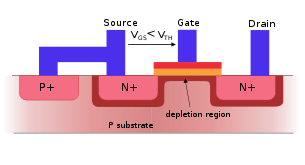Midterm 2 Solutions: Difference between revisions
Jump to navigation
Jump to search
No edit summary |
No edit summary |
||
| Line 1: | Line 1: | ||
==Problem 1== | ==Problem 1== | ||
'''Consider a magnetic system described by an Ising model <math>(S_i = \pm1)</math> on a square lattice with <math> H = \ | '''Consider a magnetic system described by an Ising model <math>(S_i = \pm1)</math> on a square lattice with <math>\ H = \sum_{\langle ij\rangle} J_{ij} s_i s_{j} + \sum_{\langle ij\rangle} K_{ij} s_i s_{j} </math>. Here, the ferromagnetic interaction <math> \ J_{ij} < 0 </math> couples only nearest-neighbor spins. In contrast,the antiferromagnetic interaction <math>\ K_{ij}>0 </math> couples only the the second neighbors, i.e. spins that are "across the square" ( diagonally placed relative to each other). | ||
a) | a) | ||
Revision as of 16:59, 7 April 2011
Problem 1
Consider a magnetic system described by an Ising model on a square lattice with . Here, the ferromagnetic interaction couples only nearest-neighbor spins. In contrast,the antiferromagnetic interaction couples only the the second neighbors, i.e. spins that are "across the square" ( diagonally placed relative to each other).
Image of square lattice with ferromagnetic coupling nearest neighbor spins. Anti-ferromagnetic coupling only second nearest neighbors.
b)
Problem 2
b) Since Coulomb interactions are long range by high densities cause the formation of solids such as crystals.
f) where











